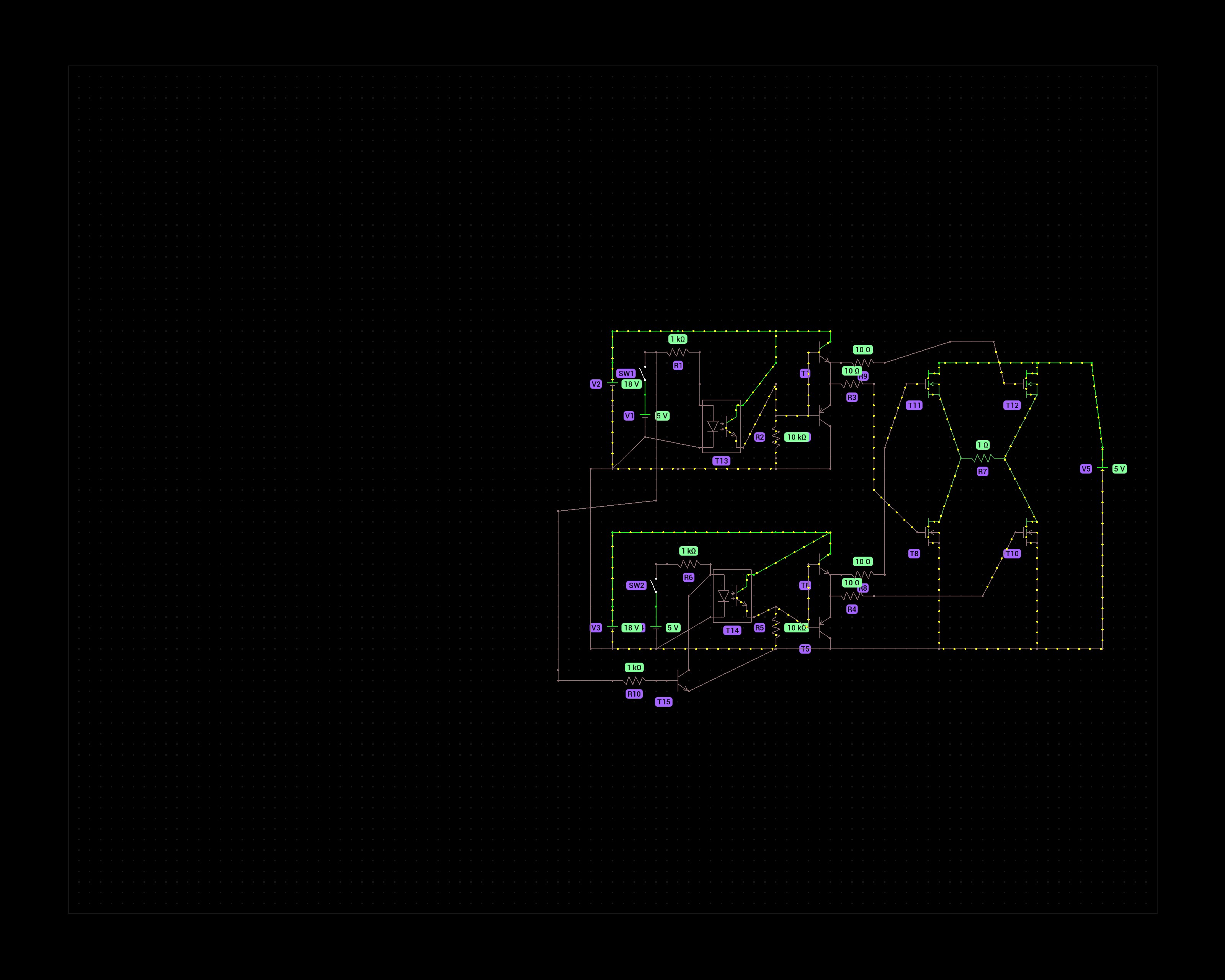this post was submitted on 07 Aug 2024
18 points (100.0% liked)
Ask Electronics
3249 readers
36 users here now
For questions about component-level electronic circuits, tools and equipment.
Rules
1: Be nice.
2: Be on-topic (eg: Electronic, not electrical).
3: No commercial stuff, buying, selling or valuations.
4: Be safe.
founded 1 year ago
MODERATORS
you are viewing a single comment's thread
view the rest of the comments
view the rest of the comments

Please don't use non perpendicular lines and draw in a clearer software if possible. Its quite hard to read.
What is the point of the push-pull BJTs? With the optocoupler you could drive the nmos gates directly. If you need more current to drive the gates (unlikely for a small motor), I suggest you buy dedicated gate drivers. They are tested and not expensive. If you have the 18V available already, using the optocouplers directly would be a lot simpler.
Right, sorry about that. I made the simulation on my phone with the Proto app.
I figured the push pull part is good practice with mosfets. It's partially the learning experience and if the motor stalls it could draw several amps.
I won't be doing PWM, just on and off so maybe just the optocoupler is good enough.
I'd have to order dedicated gate drivers and have a lot of 547 and 557 transistors in stock at home.
In that case I would omit the extra transistors and use only the optocouplers.
What sort of application is this? Having 18V somewhere and a 5V supply too that can output several amps is quite unusual.
Thanks again for the advice. I made a working prototype and attached it to my pump. The PCB is also made at home which is something I'm trying to learn.
For now I've used just optocouplers to drive the mosfets, since pulling p-type gates down to above -24V seemed like a hassle. I've ordered some IR2210 gate drivers and intend to use those with PWM later to not have to use a buck converter.
Here's a video of the pump. https://drive.google.com/file/d/1qKDBLTbYi2Fbu3UOXpxqSoj00oueWK-K/view?usp=sharing
And the pump in action. https://drive.google.com/file/d/1--HyeJGtYS5dgsjgelE6CrOm2vbBmwXU/view?usp=sharing This version has a stepper motor instead of a DC motor. Stepper motors have low speed limit which is why I'm trying to change it to DC motors.
No problem :) Let me know if you need any help!